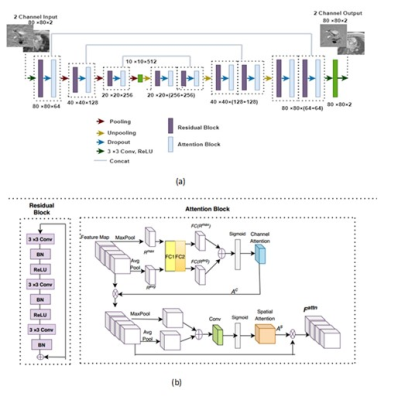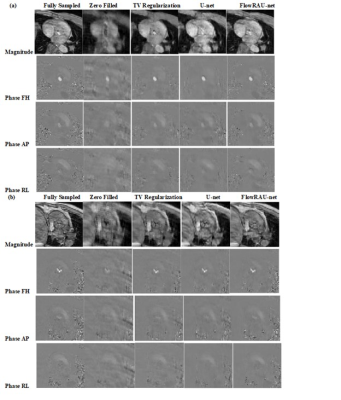Ruponti Nath1, Sean Callahan1, Marcus Stoddard2, and Amir Amini1
1ECE, University of Louisville, Louisville, KY, United States, 2Department of Medicine, University of Louisville, Louisville, KY, United States
1ECE, University of Louisville, Louisville, KY, United States, 2Department of Medicine, University of Louisville, Louisville, KY, United States
We propose a novel deep learning-based approach for accelerated 4D Flow MRI by reducing artifact in complex image domain from undersampled k-space.

Figure
1: (a) The overall architecture of proposed architecture. Back to back residual block and attention block is adopted as
the backbone of a U-Net. Each residual attention (RA) block is followed by
maxpooling in encoder network and upsampling and concatenation in decoder
network. (b) shows the architecture of a RA block. Each residual block consists
of 3 convolutional layer followed by batch normalization and ReLU. Attention block consists of channel attention
and spatial attention.

Figure 2: (a) & (b) shows
magnitude image and Phase Image
at FH, AP and RL direction from reference complex image, undersampled
complex image, image reconstructed
by U-net, TV regularization and image
reconstructed by proposed method for two subjects. The image is in the peak systole phase of the
cardiac cycle and is exactly at the location of the aortic valve for both
subjects.